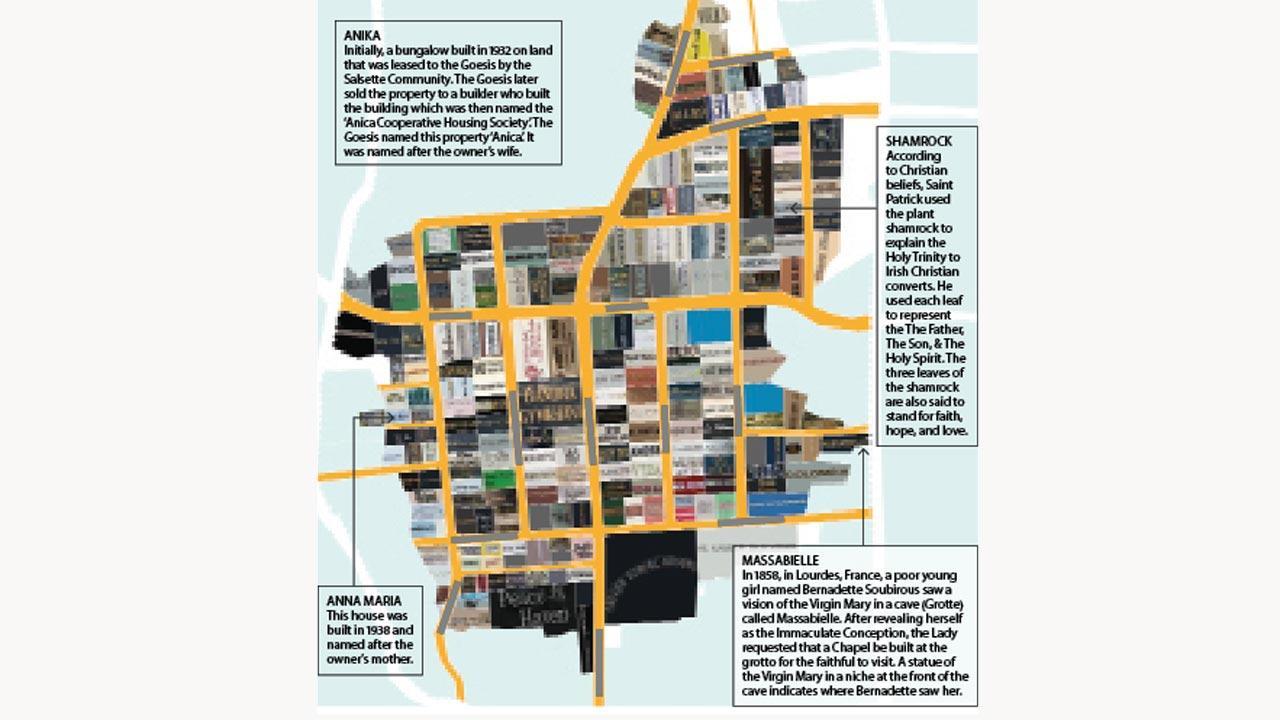Home / Sunday-mid-day / / Article /
Exhibition on Bandra's house signage mapped by architecture students
Updated On: 26 February, 2023 12:25 PM IST | Mumbai | Jane Borges
The research cell of a Bandra architecture college is mapping house signage in and around the 105-year-old Salsette Catholic Cooperative Housing Society and sharing the findings at an open-to-all exhibition

Pics Courtesy/Rizvi College of Architecture
Architect Minaz Ansari’s relationship with Bandra has been a complex one. The awareness that it is home, has fed into her curiosity to know more, while also making her conscious that she has barely scratched the surface.
“I’ve been mapping Bandra for the last few years—initially for my Master’s thesis, and later, while I was working on a guidebook for MMRDA,” says Ansari, professor, Rizvi College of Architecture, who realised that the neighbourhood’s built fabric was changing at a devastating pace. “In the last two to three years especially, some structures have vanished overnight... One day, you see blue patras put up, and the next day, the building behind them gone,” shares Ansari, “With that, the elements [of the particular building] are gone too—the architectural details, signage, or iconography.”




